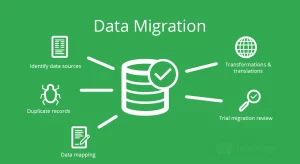In today’s digital era, a plethora of data is available to companies. Whether for marketing purposes or to create a new business strategy, data is indispensable for organizations to help make the right decisions.
That’s why data mapping is a must for companies nowadays to help them organize and classify all the data available to them in one place. This way, they will be able to track how data relates to the functions of the company and the employees responsible for it. Moreover, they can also mitigate risks and adhere to local legislation like GDPR.
Owing to the significance of data mapping in companies, we’ll share with you in this article what data mapping is and why it is so important.
What Is Data Mapping?
Connecting a data field from one source to another is data mapping. With the amount of data available to companies in today’s modern world, it can become complex for them to keep track of all the data.
Therefore, data mapping facilitates you in visualizing and connecting data fields and standardizing your data in one single source. Making a single error means an adverse impact on the success of your business and making wrong decisions.
In a nutshell, data mapping allows you to organize and classify data coming from various sources in one configuration. This helps you in making data readable and actionable.
Why Is Data Mapping Important?
Data mapping is crucial for the success of an organization as it allows for accurate decision-making, business evaluation, and forecasting. Here are the benefits of data mapping:
1. Organization
Since data mapping allows businesses to integrate all the scattered data in one place, this also helps them stay organized. They know what kind of data is stored with them, how they process it, and how it can be used within the company.
This also makes it a breeze for employees in the company to access a particular kind of data from one place whenever needed, which leads to better efficiency and improved decision-making.
Hence, rather than having randomly scattered data in the system, which makes it difficult for the organization to leverage it, data mapping presents all data in one place.
2. Trend Analysis
With all the well-organized and classified data at your disposal, you can use it for forecasting and business evaluation processes.
In addition, you can always keep an eye on the different trends of your data. This will help you make the right decisions accordingly and even adapt your business strategies.
3. Enhanced Data Quality
Data mapping facilitates you in maintaining the quality of data collected and stored. This way, you always know if there are any quality issues in the data ahead of time, so you can take corrective measures at the right time and effectively manage data.
Otherwise, data management errors can lead to lost revenue and unnecessary risk that your company might suffer greatly.
4. Key to Data Management
Data mapping lets you handle all the processes of data management the right way. Therefore, you can be sure your data is moving from one source to another without getting corrupted.
Data migration, data warehousing, and data integration allow for quality data mapping and improve the company’s performance and position.





